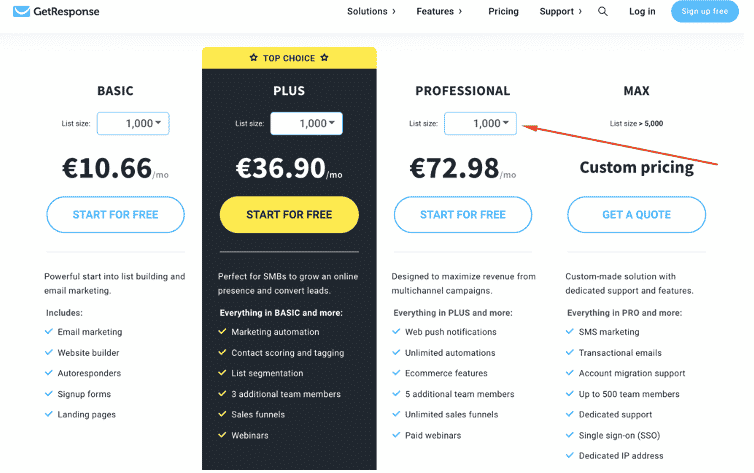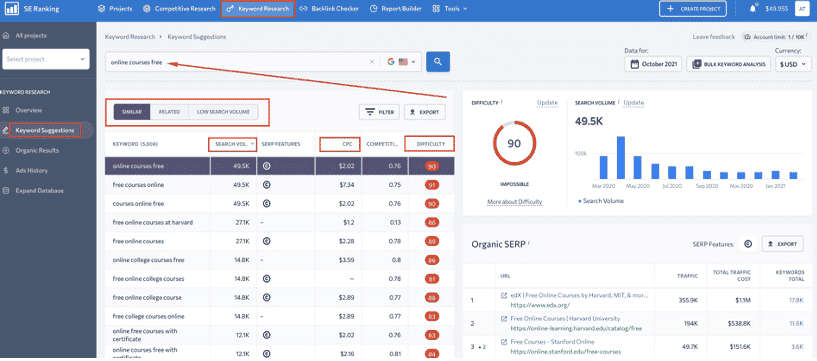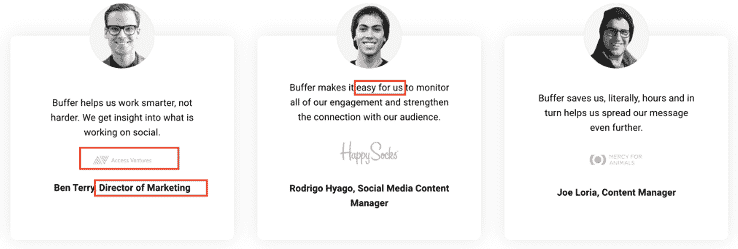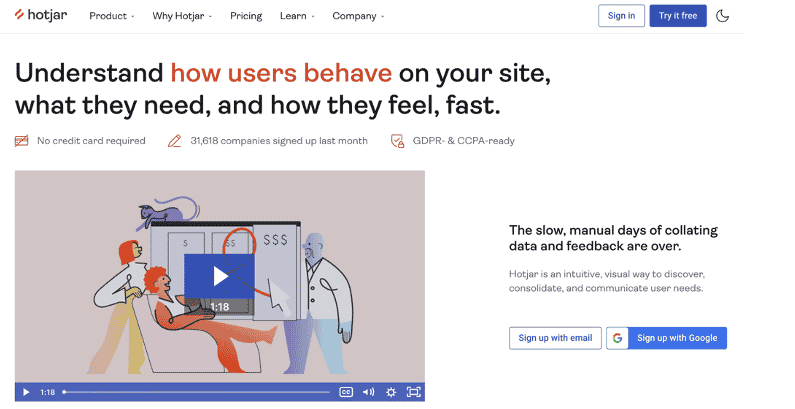
Our brain is challenged by “content shock” — every day, it processes about 100,000 words. It tries to skip information that does not seem relevant and has developed a specific approach to speed up the time it takes to process information. This is where cognitive biases appear.
What is cognitive bias?
A cognitive bias is an unconscious mistake in our reasoning that leads to misinterpretation of information. We base our conclusions on personal experience and preferences rather than facts and logic. What seems rational and logical to us may be completely wrong. Sometimes this can lead to all kinds of problems in entrepreneurship, investing, and management. And even though it is not possible to eliminate biases, it is important to understand that they exist and can affect us.
Why do marketers use cognitive biases?
Cognitive biases profoundly affect our decisions and endeavors, so it makes perfect sense that marketers frequently exploit them to influence consumer behavior.
Some marketing specialists use cognitive biases to persuade customers to buy products or services. Marketers gather information about the customers’ beliefs, preferences, and fears and coordinate offers with them. They implement associated notions into their content marketing and advertising campaigns which prove to be very effective. Some experienced marketers have learned to consider human irrationality and unpredictability when planning long-term marketing strategies. Many marketers know that content is a way to connect with the audience and have started applying this knowledge to create more compelling content.
How to use cognitive biases in content marketing?
Modern content marketing has become more connected to delivering messages and ideas rather than just selling products. In other words — first impressions matter. The way we present information directly affects how users react and perform certain actions, such as purchasing a product or service. That’s why it is useful to consider cognitive biases in the content strategy. Let’s look at the five most popular cognitive biases and how you can use them to create better content.
1. Anchoring bias
The anchoring effect is a bias whereby decisions are influenced by the first information that is found. What you learn first often has a greater impact on your choices than the information you learn later. Anchor content marketing can help you grasp the reader’s attention. It is a piece of unique, relevant, and comprehensive content that your audience might be looking for.
Marketers should conduct deep research to understand the audience’s needs and their intent to come up with the anchor that would grab their attention. To start collecting such insights on the audience, do keyword research to find the phrases your potential readers use when searching for things related to your product and services in Google.
Image source: SE Ranking screenshot
Once you have found target keywords, you can create the page with the appropriate SEO title and description. Then users and search engines will know what your page is about and will find and visit it. The better your page is optimized, the higher it will appear on the search results page, and the more likely it will anchor the reader’s attention.
Once you’ve grasped the reader’s attention and brought them to your website, you need to keep them interested. Again, anchors can help — use different content elements to convey your message:
- Provide a unique selling proposition — clearly say what your offer is, why it is unique, and the benefits. Giving a comparison with competitors is also a good idea.
- Set the initial price — list the original price first and then tell about discounts and additional features. Your readers will be anchored to the introductory price and find extra value in your offer.
- Add graphs, numbers, statistics — people tend to trust such data and make decisions based on it.
- Include illustrations and pictures — make sure your readers can visualize what you offer because it will persuade them to make decisions.
2. Confirmation bias
Confirmation bias is a tendency to favor information that reinforces and confirms existing assumptions. In other words, our brain looks for, favors, and remembers information that confirms our beliefs, despite evidence to the contrary.
To create compelling content, you should keep in mind the audience’s needs, desires, and fears. The better points you can make, the more trust you get, and the more influential the content becomes. Here are some tips on content marketing:
- Build your content on positive presumptions — people tend to trust stereotypes. If your company already has a positive image, use it to benefit your marketing. If not — try to change the stereotypes.
- Use testimonials — readers will look for evidence and examples. Using testimonials or customer success stories will prove to your readers that you are worth their trust. Here are Buffer’s testimonials on their landing page that were thoughtfully selected to build more trust – they mentioned the company, picked the management position, and also ensured to show why people love and trust their service.
Image source: Buffer screenshot
- Initiate discussions — let them make comments and ask questions. Even if the comment is negative, keep it to show you are open to discussion.
- Test your content — try different messages and types of content and select the one that suits your audience best.
It is very tempting to use confirmation bias in your marketing. However, it may lead to some dangerous complications. The modern media is full of fake news, which mercilessly abuses assumptions and fears to create a biased world perception. Brand communications should be objective and trustworthy. For example, Google assesses the expertise, authoritativeness, and trustworthiness of websites (Google E-A-T) to suggest the most relevant search results. This means that if you create high-quality, authoritative content, it will rank better and give more traffic to your site.
3. Halo Effect
The Halo effect is another cognitive bias in which one trait influences the perception of other unrelated traits. People judge books by their covers — our experience with a single product could affect the overall impression of the entire company.
Marketers should always consider the halo effect and the context of their content. Readers are more likely to accept content that is placed in an environment that they perceive as positive. A few content marketing tips:
- Optimize your website — make sure it has a decent design and works fast. If your website is not working properly, it will impact the perception of your content and services.
- Sell the experience, not the product — create a beautiful storyline that your readers can relate to and show how your services and products help get there.
- Find the competitive advantage — don’t focus only on the benefits and advantages of your services, but think about how you can solve the problem for customers. For example, when you enter the landing page of Hotjar, the platform immediately offers the marketer to understand how users behave, and once the potential customer is intrigued, the platform tells what tools it provides.
Image source: Hotjar screenshot
- Get social proof — do not hesitate to ask your clients for recommendations, collaborate with experts, and ask influencers to review your product. People are very likely to believe recommendations, especially if they come from someone they know.
- Improve your SEO — people believe that the best brands are at the top of the Google search results page.
Customers that get a good first impression of your company and have a great experience on your website are more likely to buy from or work with you.
4. Zeigarnik Effect
According to the Zeigarnik Effect, people tend to remember incomplete tasks better than complete ones. For example, readers are very likely to remember the cliff-hanger ending of a chapter and will want to continue reading. The Zeigarnik Effect creates more interest in the topic and urges customers to seek further information about products or companies.
The Zeigarnik Effect could be applied to content marketing:
- Use teasers and intriguing headlines — use short teaser texts to motivate the audience to read the full article and find out more.
- Announce your activities — arouse curiosity about upcoming events, campaigns, and special offers with separate communications. Here’s how the Leadpages platform prepares its customers for the holiday season by offering free holiday hustle kit.

Image source: Leadpages screenshot
- Optimize your website structure — when you place all necessary information on one page, it could confuse the user. Distribute information among several pages to motivate your readers to browse the site and not get distracted right after entering the site.
5. Compromise Effect
The Compromise Effect is the tendency to avoid extremes and choose an intermediate option. This psychological trick is frequently used by marketers who want to sway customers into selecting the preferred middle option, usually placed between the least and most expensive options.
Many brands apply this effect to the pricing of their products. Here it is used on the GetResponse website to customize your plan for the exact needs and start with a trial period.

Image source: GetResponse screenshot
You can also use it in content marketing. When you want to convince your audience about a certain action or decision, always support it with alternatives. Give them a chance to consider all possible options and select the one that seems the most appropriate. Don’t overly influence the reader. Let them make their own decision.
Conclusion
Our brain acts irrationally sometimes, and we don’t even notice it. Cognitive biases have a profound effect on our decision-making and actions. Many marketing specialists use cognitive biases to influence consumer behavior and persuade customers to buy products or services. The better you understand your audience, their needs, and fears, the easier it will be to create compelling, profitable content.
Author bio: Diana Ford is a digital marketing specialist with 10+ years of experience. Diana loves blogging and shares her expertise regarding digital trends, marketing techniques, search optimization, and business strategies.
Get the latest news
Blog Topics
- Analytics
- Branding & Identity
- Budget
- Construction
- Content Marketing
- Conversion Rate Optimization
- Email Marketing
- HubSpot
- Inbound Marketing
- Lead Generation
- Marketing Strategy
- News/Events
- Paid Search & PPC
- Recruiting
- Sales & Marketing
- Sales Enablement
- Search Engine Marketing
- Search Engine Optimization
- Social Media
- Thought Leadership
- Uncategorized
- Usability
- Video Marketing
- Web Hosting
- Website Design


